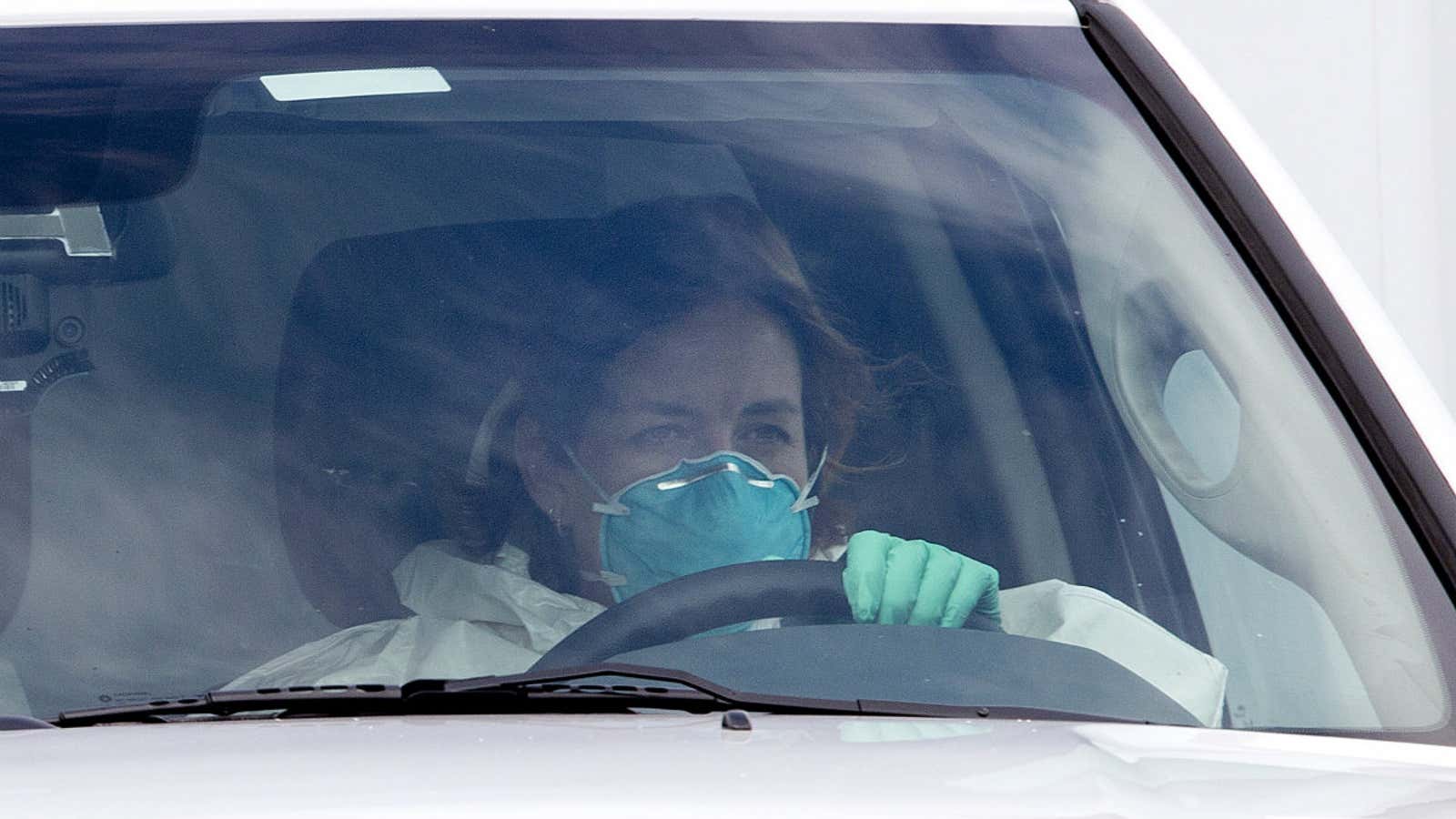Well, it finally happened: The US just got its first case of Ebola. Health officials have confirmed that a man recently admitted to a Dallas hospital has come down with the deadly virus, which has already killed more than 3,000 people in West Africa. The patient was admitted based on both symptoms and “travel history“—presumably he had been in West Africa—and is now being held in “strict isolation,” say officials.
Below are excerpts from an earlier Quartz piece on a New York patient suspected of carrying the Ebola virus that explore why Americans would do well not to panic:
If your Twitter feed is anything like mine, news that Ebola might have turned up in Manhattan is freaking out a lot of Americans. “Helpful” bits of commentary include as that it’s “deadly uncurable,” has a 90% fatality rate, and causes “a hemorrhagic fever that eventually leads to a complete bleed-out.” Today’s news merely amplifies the anxiety that’s been building since word got out that two Americans infected with Ebola have been moved to US hospitals for treatment.
There are plenty of people who should be protecting themselves against Ebola’s spread—and they live in West Africa. Those of us who are in the US should feel comforted by the following:
- Ebola’s not airborne. It can only be spread through bodily fluids. The virus spreads when blood, semen, urine, vomit, feces, or other bodily fluids of an infected person come into contact with someone else’s mucus membranes.
- And it’s not just any infected person—it’s a symptomatic infected person. People can only catch ebola from someone actually exhibiting symptoms. Those include vomiting, diarrhea, and, in some cases, hemorrhaging of mucus membranes, such as nose, nail beds and eyes—in other words, pretty hard to miss.
- It isn’t curable, but people survive it. In fact, this outbreak has a 57% mortality rate—much lower than that oft-cited 90%. Victims die of organ failure, not blood loss.
- That pig study doesn’t mean anything. Some people are citing a 2008 study showing airborne Ebola transmission from pigs to rhesus monkeys (they were never in direct contact with each other). However, as Aetiology explains, this experiment showed merely that pigs seem unusually good at spritzing the air with coughed-up viruses. Avoid Ebola-infected pigs and you’re fine.
- Nearly every hospital in the US is equipped to treat Ebola patients and keep them in isolation. And the symptoms, once they set in, are so aggressive that it’s hard to do much of anything except head to the hospital.
- Another reason for all the worry is that the media (Quartz included) has tended to zero in on this outbreak’s rapid spread and its being the “deadliest in history.” While both are true, that says way more about the quality of medical care in war-torn, poverty-stricken pockets of West Africa than it does about Ebola’s virulence.
Compare the Mount Sinai response with that Liberian hospitals, which are so packed that they’re having to turn away Ebola patients. The country is running out of rubber gloves, and the health ministry just dumped 37 Ebola-infected corpses in a swampy, open hole near a (so far, relatively healthy) village. Those aren’t first-world problems.
Scott Z. Burns, who wrote the screenplay for Contagion, notes that Americans tend to freak out about “the monster we can see”—in this case, that would mean the gruesome images of Ebola victims bleeding from their faces—while ignoring more familiar but no less deadly risks. He has a point; thanks to the anti-vaccine movement, measles cases in the US have surged nearly fourfold since last year.
